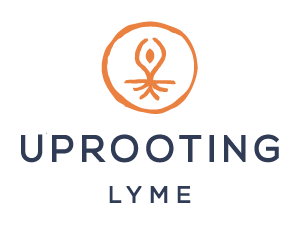
Essential Oils for Bartonella: New Research Confirms Power
At our clinic in Stone Ridge, NY we specialize in the treatment of “stealth infections.” Such infections are challenging to diagnose, not well-recognized by most doctors, involve changing / moving symptoms and mysterious or unusual complaints, and are notoriously difficult to treat due to the infecting organism’s innovative survival strategies. One of the stealth infections we see often is Bartonella, sometimes co-occurring with Lyme-Borreliosis, and sometimes on its own or co-existing with other infections.
Bartonella henselae is a bacterium associated with “cat scratch fever,” an infection characterized by fever, flu-like symptoms, painful or swollen lymph glands, endocarditis (inflammation of the muscle surrounding the heart), and skin rash. It can be transmitted by biting insects such as fleas, ticks, and lice, or from the bites or scratches of cats infected by these vectors. Numerous other species of Bartonella exist; the most common universal symptoms of Bartonellosis include fever, swollen lymph glands, bone pain (especially the ribs, shins and soles of the feet), spontaneous bruising or spider veins, severe headache and/or eye disorders, emotional distress, and other neurological symptoms.
Because of Bartonella’s ability to form “persister bacteria,” a variant of regular cells which can lie dormant and withstand heavy and multiple antibiotic use and resume normal operation once the treatment has stopped, the first-line antibiotics prescribed (doxycycline, erythromycin, gentamicin, azithromycin, rifampin) are not entirely effective, and many patients experience bouts of relapse or chronic infection.
Due to the lack of effectiveness of pharmaceuticals for Bartonella infections, researchers have been studying essential oils as a potential treatment. Essential oils are concentrated volatile compounds extracted from plants that are often a repository for medicinal compounds. Studies documenting the antimicrobial activity of certain components of essential oils, such as eugenol, thymol, cinnamic acid, and y-terinene, have existed for decades. Certain combinations of these compounds may also possess synergy, increasing clinical efficacy when used in tandem.
Recent research performed by Johns Hopkins University has identified 32 essential oils highly effective in vitro against stationary phase Bartonella henselae – the stage in bacterial life cycle where bacteria do not grow, but still remain metabolically active – as well as in its growing phase. These essential oils showed effectiveness beyond that shown by antibiotics; each outperformed doxycycline, azithromycin, gentamicin, and rifampin, which were administered in the control group for comparison.
The top 15 oils the researchers for Bartonella treatment, in order of effectiveness, were as follows:
1. Cinnamon bark.
The compound cinnamaldehyde in cinnamon bark essential oil was found to be so effective against stationary phase Bartonella that it was able to eradicate all bacterial cells in the culture even at <.008%, the lowest concentration studied.
2. Oregano.
Carvacrol, found in oregano essential oil, was found to be just as effective as cinnamaldehyde – producing eradication at .01% concentration in vitro.
3. Elemi
4. Mountain (winter) savory
5. Cedarwood
6. Ylang Yang
7. Citronella
8. Clove bud
9. Geranium
10. Allspice
11. Vetiver
12. Cinnamon leaf
13. Geranium
14. Bergamot
15. Cajeput
Moreover, the researchers found that oil combinations were more effective than single oils alone. For example, a blend of cinnamon, clove, eucalyptus, lemon and rosemary essential oils showed greater activity against Bartonella than the average minimal inhibitory concentrations of its constituent oils.
Chinese herbalists have known for centuries that plant chemistries have synergistic effects that increase both effectiveness and safety, which is why formula blends achieve the greatest benefit with the least risk. In fact, when taken at the proper dosage, there is virtually no risk of side effects when taken as a liposomal essential oil remedy.
Our liposomal essential oil remedies are designed not only to manage microbial load, but also to reduce inflammation and the signs and symptoms of dis-ease. Eleven of the 15 oils found most effective in this study, including all top 4 oils, are in our liposomal essential oil remedy Lucid, formulated specifically for Bartonella infection. Our Lucid formulation is as follows:
- Oregano
- Cinnamon bark
- Mountain (winter) savory
- Geranium
- Clove bud
- Allspice
- Ylang ylang
- Citronella
- Elemi resin
- Vetiver
- Peppermint
Lucid can be purchased only at www.bloomreveal.com – and it’s currently on sale through the end of February!
Want to learn more about the researchers’ findings? Read more about this groundbreaking research.
Curious about our liposomal essential oil formulations? View a recording of our recent webinar, Achieving Clinical Breakthroughs with Liposomal Essential Oil Remedies.
In this webinar Hillary shares the latest research demonstrating the potency and potential for using essential oils to treat Lyme and other complex illness and chronic infection. Specifically, she discusses:
- Specific formulations for issues such as Lyme disease, mold toxicity, parasites, and biofilm, so you understand how they work.
- Recommended dosages and pacing for best outcomes.
- How to use these products in the context of a strategic treatment plan.
Liposomal EO remedies treat complex illness at the source. They are antimicrobial, anti-toxin, and anti-inflammatory, and they are now available to practitioners at wholesale pricing. Watch our video to learn how to have these treatments at your fingertips!
Yours in health,







Hi ,
please can i ask if you sell to the UK ?
Many thanks ,
linda .
Hi Linda,
Yes, we do sell internationally!
Hi , many thanks !
linda.
You’re welcome!